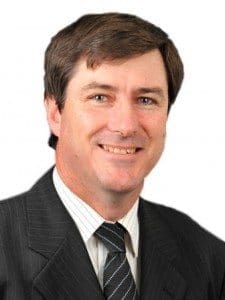THE decline in value of the Australian dollar this year has lifted confidence across the cattle industries and property markets in particular, contributing to what Herron Todd White national rural director Tim Lane describes as the “perfect storm.”
Not only has a falling currency made property acquisitions for international investors cheaper, it coincides with lower interest rates; a bright commodity outlook for beef, live cattle exports and co-products; and increased export beef demand as a result of various Free Trade Agreements; and lower beef production trends overseas.
It’s a view supported by CBRE’s regional director of agribusiness, Danny Thomas, who said it was rare to see this amount of positivity across all major economic drivers of land values.
One of the central planks to this situation is the Australian dollar’s performance. This time last year it was sitting at around US95c. That followed a period up to April 2013 when the currency rose to well above parity, sitting for long periods above US105c.
In the past 12 months alone, the A$ has dropped about 24pc in value to US73c this week, and analysts are predicting further declines.
In its most recent analysis, National Australia Bank has downgraded it’s A$ forecast from US74c to US72c by the end of 2015, on the back of recent global events including the disruptions in Greece and weaker Chinese equity markets.
That currency movement is not only heightening demand for Australian beef and livestock on international markets, but also enhancing the investment attraction in the Australian red meat supply chain from overseas.
There have been episodes in the past where offshore investors in Australian extensive cattle property have made substantial capital gains due to currency movements.
A good example is Texas-based Tejas Land & Cattle Co, which made a series of large property acquisitions in the Northern Territory from the late-1990s to early 2000s, at a time when the A$ was worth only US55-60c.
The group bought Montejinni for $7.57m in 1998, and added properties from the Sultan of Brunei’s Desa Cattle Co, including Delemere, purchased in 2002 for $15.2m.
At one point Tejas’s property portfolio including Camfield, Montejini, Delemere and Moroak in the NT ran about 100,000 cattle, including 65,000 breeders.
Tejas sold most of its northern Australian cattle investments in 2004, making a substantial profit – not only on increases in property value as northern live exports started to gather momentum, but also in US$ terms as the A$ currency rose more than 30pc in value from the time of purchase, to +US77c.
In what was one of the largest-ever property deals seen in the NT to that point, the Australian Agricultural Co paid $80 million in December 2004 for Tejas’s Victoria River District breeding properties Delamere, Montejinni and Camfield, totalling some 900,000ha.
While Tejas was always portrayed as a ‘short-term, strategic’ investor in Australia, the company at the time of the sale said the currency movement was a central part of its decision to sell.
Currency strong contributor
Both Herron Todd White’s Tim Lane and CBRE’s Danny Thomas think the current lower exchange rate trend has been a strong contributor to recent increased global interest in Australian rural property.
Mr Thomas said that despite reports to the contrary, Asia is not the most dominant investor, with most of the offshore money to this point coming from the United States, Canada and Europe.
He said the offshore interest had certainly not diminished local buyer inquiry this year, with two of the largest transactions made by domestic investors.
“We are not really seeing the dramatic shifts in values yet, but we are seeing a significant change in the volume of properties that are transacting,” Mr Thomas said.
“From October last year, the level of enquiry really started to ramp-up rapidly and as the dollar has continued to decline, the pace of that enquiry (from overseas interests) has increased.”
Mr Thomas said the small property supply ‘overhang’ that currently existed had not affected prices significantly, and what was being seen was a lot of the existing supply being taken-up, where it had institutional appeal. “Large institutional foreign investors are now transacting with a fair bit of depth,” he said.
Mr Thomas believes rural property values will continue to increase, particularly once the supply surplus is absorbed.
“If prices remain robust, I think we will see a really quick turnaround and there will be a likelihood of increased prices.”
Conversely, Tim Lane believes better seasonal conditions in those areas that are still dry are the key to driving buyer activity and pushing up grazing property values.
Mr Thomas said it was rare to see a big buyer pool with the amount of capital available as that which currently exists, and he believes the Australian cattle property market should have at least four or five good years in front of it.




HAVE YOUR SAY